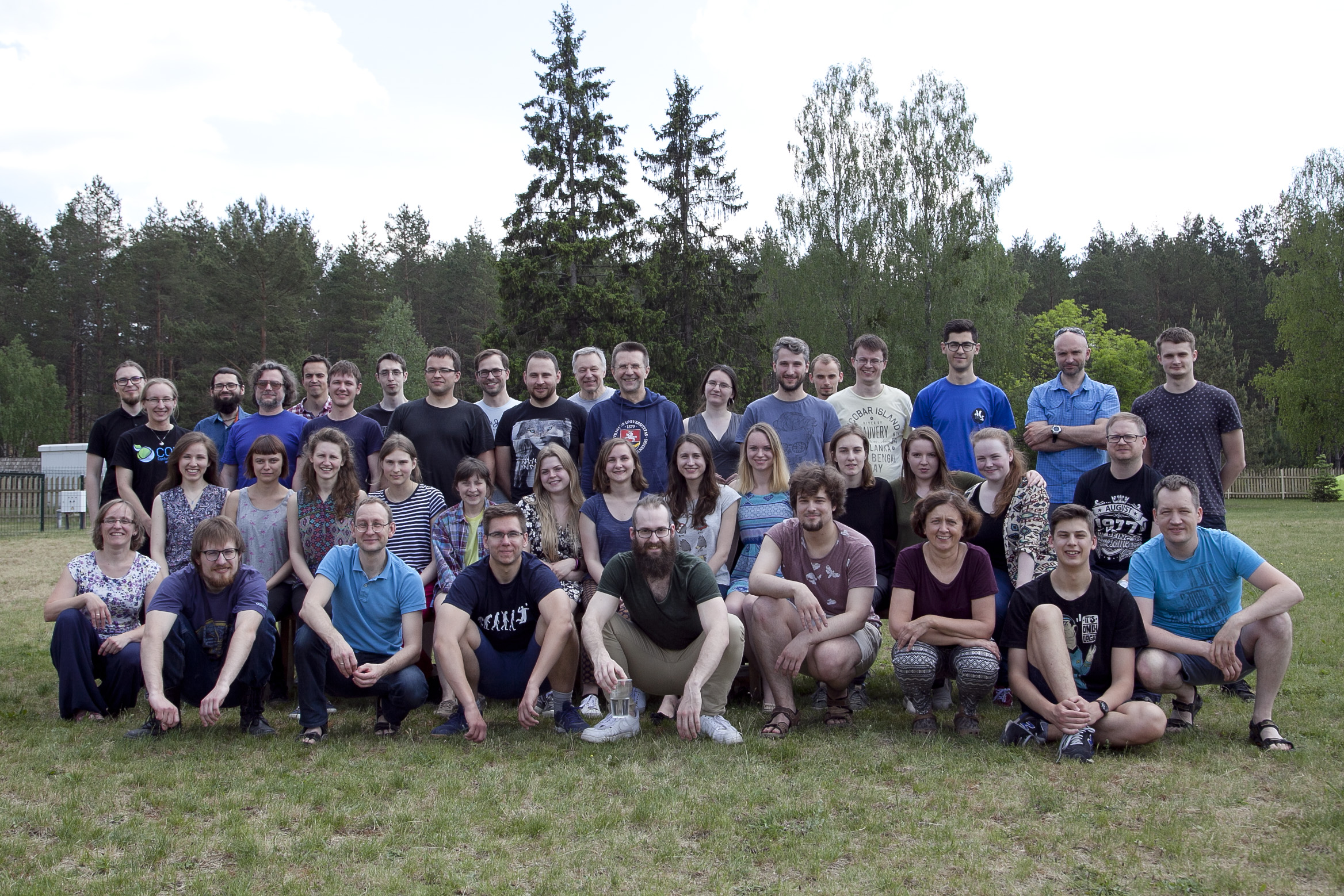Department of Protein - DNA Interactions
|
| Chief Scientist and Head:
Tel. +370-5-2234354 | Lab. Members: Dr. Giedrius Gasiūnas Dr. Saulius Gražulis Dr. Tautvydas Karvelis Dr. Elena Manakova Dr. Andrius Merkys Dr. Giedrius Sasnauskas Dr. Arūnas Šilanskas Dr. Tomas Šinkūnas Dr. Giedrė Tamulaitienė Dr. Gintautas Tamulaitis Dr. Paulius Toliušis Dr. Mindaugas Zaremba Dr. Evelina Zagorskaitė Dr. Marijonas Tutkus Dr. Nina Urbelienė Dr. Danielis Rutkauskas Dr. Marija Jankunec Dalia Smalakytė, MSc Inga Songailienė, MSc Gediminas Drabavičius, MSc Rimantė Žedaveinytė, MsC Lina Aitmanaitė, MSc Rūta Zinkevičiūtė, MSc Graduate Students: Greta Bigelytė, MSc Gediminas Drabavičius, MSc Edvardas Golovinas, MSc Irmantas Mogila, MSc Antanas Vaitkus, MSc Dalia Smalakytė, MSc Donata Dakinevičien,ė MSc Algirdas Grybauskas, MSc Gediminas Drabavičiu,s MSc Jonas Juozapaitis, MSc Undergraduate students: Simonas Ašmontas Konstantyj Keda Danas Klimavičius Aurimas Kopūstas Eglė Kupčinskaitė Danguolė Norkūnaitė Džiugas Sabonis Rugilė Ivanickaitė Ugnė Gaižauskaitė Tomas Venclovas Gytis Druteika Aistė Petrauskaitė Karolis Sabutis Justė Paksaitė Ugnė Tylenytė Marija Duchovskytė Technical assistant: Ana Tunevič Jadvyga Matulevič Ilinykh |
 | ||
Research overview | ||
The overall research theme in our lab is the structural and functional characterization of enzymes and enzyme assemblies that contribute to the bacteria defense systems which target invading nucleic acids. In particularly, we are involved in the deciphering structural and molecular mechanisms of restriction enzymes, and the molecular machinery involved in the CRISPR function. We are using X-ray crystallography, mutagenesis, and functional biochemical and biophysical assays to gain information on these systems.
Projects
Structure and molecular mechanisms of CRISPR/Cas systems.
Recently, an adaptive microbial immune system CRISPR (clustered regularly interspaced short palindromic repeats) has been identified that provides acquired immunity against viruses and plasmids. CRISPR represents a family of DNA repeats present in most bacterial and archaeal genomes. CRISPR loci usually consist of short and highly conserved DNA repeats, typically 21 to 48 bp, repeated from 2 to up to 250 times. The repeated sequences, typically specific to a given CRISPR locus, are interspaced by variable sequences of constant and similar length, called spacers, usually 20 to 58 bp. CRISPR repeat-spacer arrays are typically located in the direct vicinity of cas (CRISPR associated) genes. Cas genes constitute a large and heterogeneous gene family which encodes proteins that often carry functional nucleic-acid related domains such as nuclease, helicase, polymerase and nucleotide binding. The CRISPR/Cas system provides acquired resistance of the host cells against bacteriophages. In response to phage infection, some bacteria integrate new spacers that are derived from phage genomic sequences, which results in CRISPR-mediated phage resistance. Many mechanistic steps involved in invasive element recognition, novel repeat manufacturing, and spacer selection and integration into the CRISPR locus remain uncharacterized.
Structure and function of restriction endonucleases
Restriction and modification systems commonly act as the first line of intracellular defense against foreign DNA and function as sentries that guard bacterial cells against invasion by bacteriophage. R-M systems typically consist of two complementary enzymatic activities, namely restriction endonuclease (REase) and methyltransferase (MTase). In typical RM systems REase cuts foreign DNA but does not act on the host genome because target sites for REase are methylated by accompanying MTase. REases from 4000 bacteria species with nearly 330 differing specificities have been characterised. REases have now gained widespread application as indispensable tools for the in vitro manipulation and cloning of DNA. However, much less is known about how they achieve their function.
In the Laboratory of Protein-DNA Interactions we focus on the structural and molecular mechanisms of restriction enzymes. Among the questions being asked are: How do the restriction enzymes recognize the particular DNA sequence? What common structural principles exist among restriction enzymes that recognize related nucleotide sequences? How are the sequence recognition and catalysis coupled in the function of restriction enzymes? Answers to these questions are being sought using X-ray crystal structure determination of restriction enzyme-DNA complexes, site-directed mutageneses and biochemical studies to relate structure to function.
Crystallography Open Database COD
The COD project (abbreviated from the "Crystallography Open Database", http://www.crystallography.net/) aims at collecting in a single open access database all organic, inorganic and metal organic structures (except for the structures of biological macromolecules that are available at the PDB). (read more ...)





